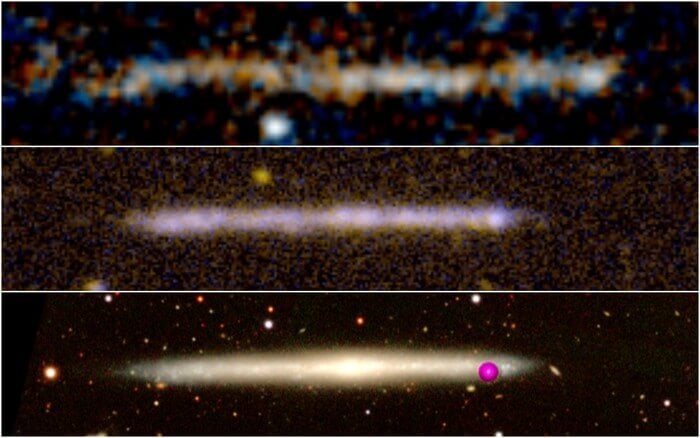Scientists using the Hubble Space Telescope recently discovered a mysterious trail of stars that formed eight billion years ago. It’s been puzzling researchers ever since.
The structure of the starry trail is similar in size to our Milky Way, and it has sparked different explanations about how it formed. One controversial theory is that the trail of stars resulted from the passage of a supermassive black hole through a massive cloud of gas. This idea captured the imagination of astronomers because it required many exceptional circumstances. But other research teams have been exploring different and less exotic scenarios to explain the observations.
In a recent study, researchers at the IAC proposed a new explanation. They suggest that the starry trail could be a flat galaxy without a bulge viewed edge-on. This type of galaxy is common and matches the observations of similar galaxies in the local universe.
“It’s a relief to have found the solution to this mystery, the new proposed scenario is much simpler,” said the lead author of the article, Jorge Sanchez Almeida. “In one sense, it’s also unfortunate, as the presence of fleeing black holes was expected, and this could have been the first one to be observed.”
“When we analyzed the velocities of this distant structure of stars we realized that they were very similar to those obtained from the rotation of galaxies, so we decided to compare a much closer galaxy, and found that they are extraordinarily similar,” added Mireia Montes, an IAC researcher who co-authored the study.
To support their hypothesis, the researchers compared the starry trail with a well-known, local galaxy without a bulge, IC5249, that has a similar mass of stars. They found similarities between the two structures.
Ignacio Trujillo, a researcher who contributed to the study, explains, “It is an interesting object, because it is quite a large galaxy at a very large distance from Earth, where the majority of the galaxies are smaller.”
The researchers are now planning to study the object in greater detail to gain more insights into this peculiar structure.

